
The Battle of Culloden: David Morier, 1746
"Mr. Arthur Lee mentioned some Scotch who had taken possession of a barren part of America, and wondered why they would choose it. Johnson: 'Why, Sir, all barrenness is comparative. The *Scotch* would not know it to be barren.'"
"Your country consists of two things, stone and water. There is, indeed, a little earth above the stone in some places, but a very little; and the stone is always appearing. It is like a man in rags; the naked skin is still peeping out."
"What enemy would invade Scotland, where there is nothing to be got?"
"Knowledge was divided among the Scots, like bread in a besieged town, to every man a mouthful, to no man a bellyful."
"Asked by a Scot what Johnson thought of Scotland: 'That it is a very vile country, to be sure, Sir' 'Well, Sir! (replies the Scot, somewhat mortified), God made it.' Johnson: 'Certainly he did; but we must always remember that he made it for Scotchmen.'"
From James Boswell: The Life of Samuel Johnson, 1791

Heriot's Hospital, Edinburgh: Joseph William Mallord Turner, c. 1819 (National Gallery of Scotland, Edinburgh)
Serpentine heath, Virda Field. Serpentine heath, a sedge-rich heath growing on basic serpentine rocks, on the southern slopes of Virda Field, looking towards the islands of Balta and Huney: photo by Mike Pennington, 21 June 2003
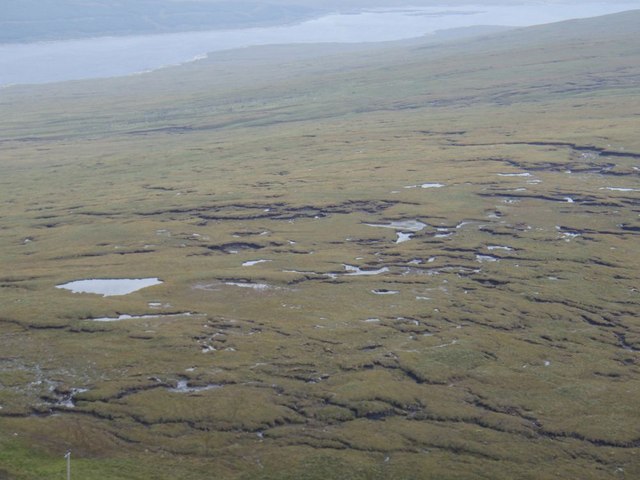
The Flow country in Sutherland. A very small part of the 4000 sq km blanket bog in Sutherland and Caithness taken from near the top of Maovally. The drizzle encourages the feeling of total saturation! The lochans seems to follow the line of the watershed. The ridges seem to be bog "stretch marks" as it flows down the slope in the foreground to Glen Cassley and in the background to Loch Shin: photo by Graeme Smith, 5 September 2008
Heather Moorland, Meall Reamhar. Photo taken near the southwestern top of Meall Reamhar where the heather is 'thinner' and there are occasional outcrops of exposed rock: photo by Robert Bone, 23 April 2007

Glacial Erratics. A number of erratic rocks are scattered here by Allt a' Bhealaich Dhuibh: photo by OLU, 17 October 2006
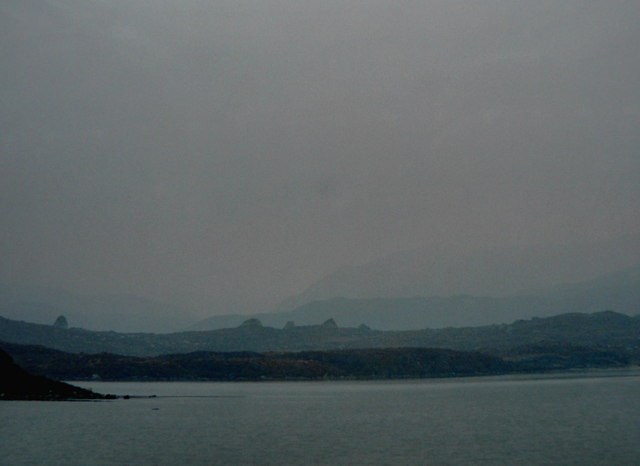
Glacial Erratics. Glacial erratics photographed at evening across Gorm Loch Mor: photo by AlastairG, 22 March 2005
Stream on Ben Killilan by Creag Mhor. Looking toward Loch Carron in the distance: photo by Paul Farr, 16 December 2005
Coast of Lunna Ness south of Neegirth, near to Hamnavoe, Shetland Islands. The large stones on the hill, just in the adjoining square, are named Stofast: photo by Mike Pennington, 30 April 2010

Inhabitants of St. Kildans sitting on the village street: photographer unknown, 1886 (National Trust of Scotland)
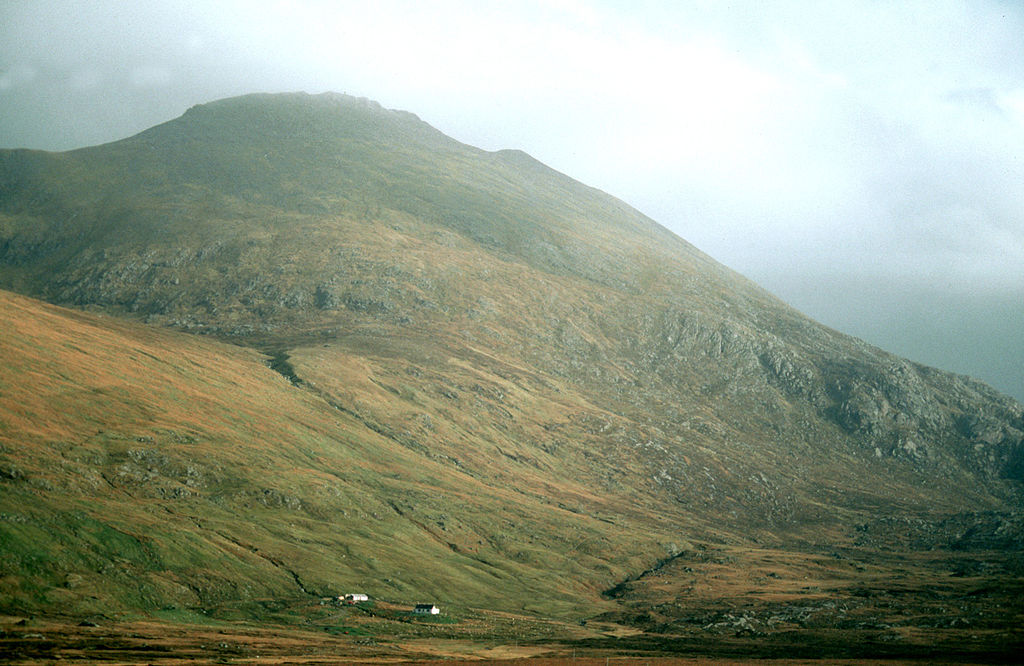
Northwest Highlands of Scotland, empty land in the northern part: photo by Manfred Heyde, 1995
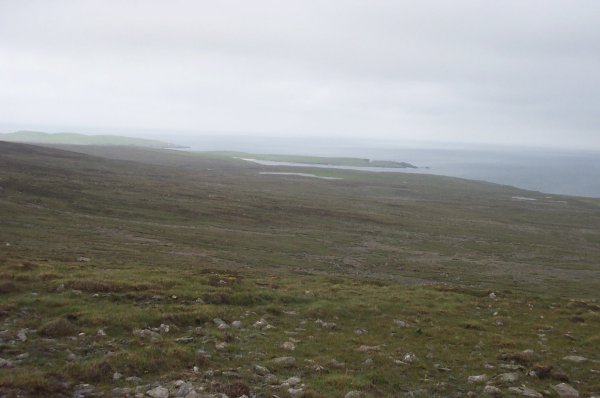
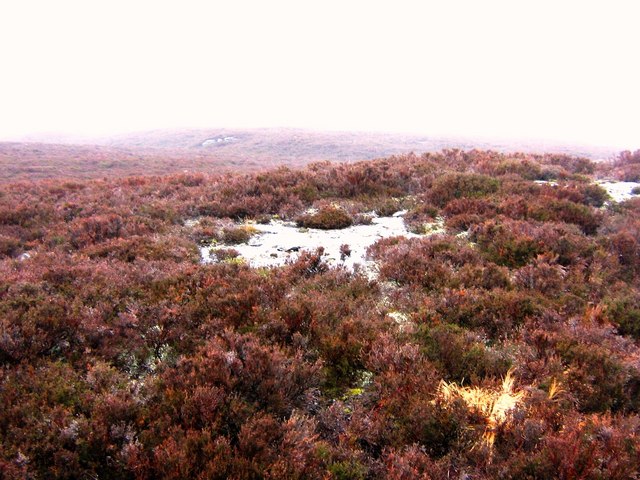
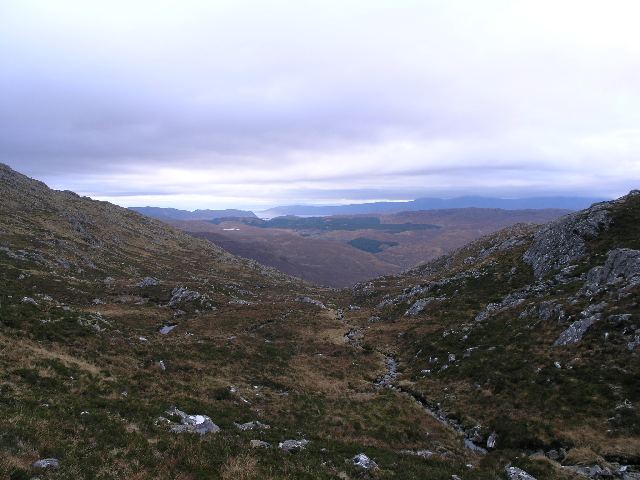




10 comments:
But those Scotchwomen have bottoms of good sense.
And now the question is--
Will Scotland become independent? With all that oil revenue, they are sitting pretty, and I think the British are not to eager to have them set free . . . barren or not.
But it does look pretty, doesn't it? I'd take stone and water over stone and sand any day, and that seems to be what most of the battles or for--
I mean --
what the battles we most fear are for.
Not to articulate today . . .
Tom,
Aye laddie, what a land -- all those rocks and that heather. Poor Dr. Johnson, must've been listening to the wrong radio (some ancestor of Rush Limbaugh was it?). Ben Jonson went on a walking tour, as I recall, with Drummond of Hawthornden, left us "My Picture Left in Scotland" w/ eyewitness account of "My mountain belly and my rocky face."
It looks a bit like Scotland here today -- the green field become a bog, the ridge disappeared in fog.
3.15
light coming into fog against invisible
ridge, song sparrow calling from branch
in foreground, sound of wave in channel
corresponding line at first
appeared, during past
what follows, in space-time
continuum, measure of
grey rain cloud against plane of ridge,
windblown drops splashing into channel
Scotland looks lovely to me. Not an automotive vehicle in sight. A bit rugged, perhaps, but no colder than we have it here, and about equally grey and wet. And who wouldn't prefer a bit of heather, a bog or two and the occasional scatter of glacial erratics to concrete and more concrete.
Ahhhhhh how can i forget ..... summer holidays huddling by a stone wall with the in-laws (and out-laws) nibbling on a shared crust
A common Sassenach mistake but Scotch or usquebae or whisky (water of life) is an alcoholic drink. Scots would be the correct word for the bipeds Although the mistake is understandable considering the volume consumption of some of the natives I still miss the feel and smell of the place
Well the Romans must have thought that there was gold kin them thar hills ..... but the legions sent in never came back to tell the tale. I don't think they fought in formation on a battlefield though
Hey on a cheerier note We did invent a game designed to torment our enemies to distraction - golf Oh and who can deny the nail-biting excitement of curling?
http://www.ltscotland.org.uk/scotlandshistory/caledonianspictsromans/hadrianswall/index.asp
Earlier attributed to The Romans, experts have been forced to rethink this in light of a recently discovered inscription at the western end: ‘Made in China.’
Must curl up to my stony pillow now and pull a blanket of fog over me zzzzzzzzz
At this point in the dialogue one can only say Dal that you have made the Clan of Duncan proud and done a far stouter job of representing your Scots blood than did James Boswell, 9th Laird of Auchinleck.
Not of course that Saml Johnson would have been so easily stood up to on the day and in any case, but still.
(Should not be forgot that he, JB that is, was after all as bad a lawyer as he was wonderful a scribe of the particulars of a life...)
Post a Comment